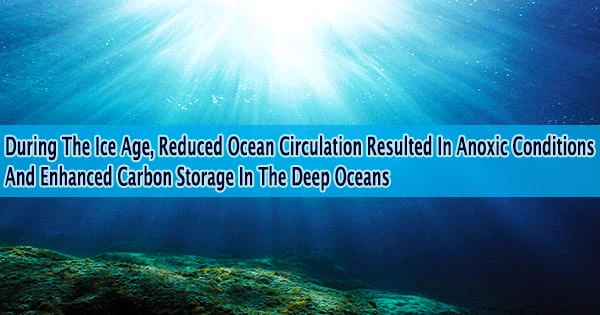The ocean is an important part of the Earth’s climate system because it acts as a natural carbon sink. The amount of carbon eliminated from the system over time is determined by the number of carbon-containing particles stored in the seafloor.
Because dissolved oxygen is consumed during the microbial breakdown of previously created biomass, its availability is critical. The vertical circulation is the primary determinant of oxygen distribution in the water column.
The authors of the current study looked at sediment samples to see if the equivalent circumstances in the deep ocean were affected by changes in the Earth’s recent history. Chemical elements that can be utilized as indicators for oxygen-free environments and that have been preserved in sediment for thousands to millions of years have been studied.
Sediment cores from biologically highly productive area analyzed
The team’s sediment cores originated from the Cape Basin, off the west coast of southern Africa, at depths ranging from 1,000 to 2,500 meters. The area is one of the most biologically productive because of the ocean currents: Phytoplankton productivity is boosted by cold, nutrient-rich water from the depths. Microorganisms in the water column and on the seafloor digest sinking particles of dead organic material.
Today, oxygen-free zones are found on the shallow shelf up to a water depth of a few hundred meters, that is at the transition from the continental shelf to the open ocean. During the Ice Age, on the other hand, the water of the open ocean was anoxic at greater depths.
Dr. Florian Scholz
This technique uses a lot of oxygen. Large amounts of organic material sinking may demand more oxygen than the ocean currents can provide. The water column becomes “anoxic,” meaning devoid of oxygen.
Oxygen deficiency also detected in the deep sea during ice age
The researchers were able to prove that substantially less oxygen must have been accessible in the deep ocean during the last glacial period compared to warmer periods using geochemical traces in the sediments.
Until now, it was thought that glacial times had a higher temperature difference between the poles and the equator, which was linked to an increase in wind circulation, resulting in a stronger upwelling of nutrient-rich water and, as a result, more intensive biological activity.
It was also known that the near-shore upwelling shifted towards the continental slope and therefore the deeper sections of the ocean as a result of the creation of polar ice caps and the subsequent lower sea level during cold periods.
“What is new about the current study is that the depletion of oxygen is not limited to water depths of a few hundred to a thousand meters but has now also been detected at the bottom of the ocean,” says co-author Dr. Matthias Zabel from MARUM.
More organic carbon is stored at depth
This can be linked to two main factors: Intensive breakdown processes of the increased biomass produced during glacial eras used a lot of oxygen. The increasing organic carbon content in the sediments analyzed can be interpreted as a clear indicator that oxygen availability was severely limited at the same time.
“Today, oxygen-free zones are found on the shallow shelf up to a water depth of a few hundred meters, that is at the transition from the continental shelf to the open ocean. During the Ice Age, on the other hand, the water of the open ocean was anoxic at greater depths,” emphasizes Dr. Florian Scholz.
The study’s co-author and head of the Emmy Noether research group ICONOX Iron cycling in continental margin sediments and the ocean’s nutrition and oxygen balance is the GEOMAR biogeochemist.
Implications for the global carbon cycle
“From the sediment samples, we understand that during glacial periods, organic material was degraded less effectively in the deep ocean and consequently more organic carbon was buried in the seabed sink,” says Dr. Scholz.
“By analyzing these processes from Earth’s history in more detail, we can better assess whether slower circulation could also lead to increased storage of human-released carbon in deep-sea sediments in the future,” adds Dr. Zabel, summarizing the significance of the new study for research.
The importance of determining and evaluating processes and mechanisms that effect the oceanic bottom water oxygen concentration is critical in light of the present climate change caused by anthropogenic CO2 increases, according to the paper.





